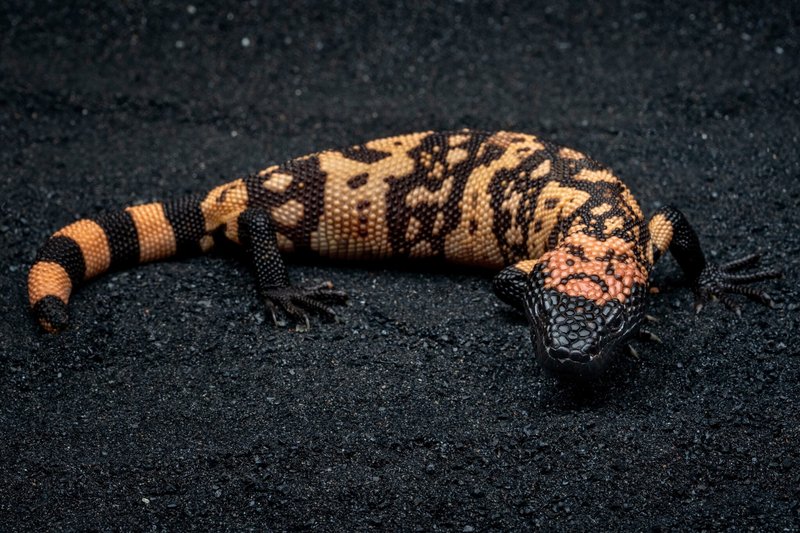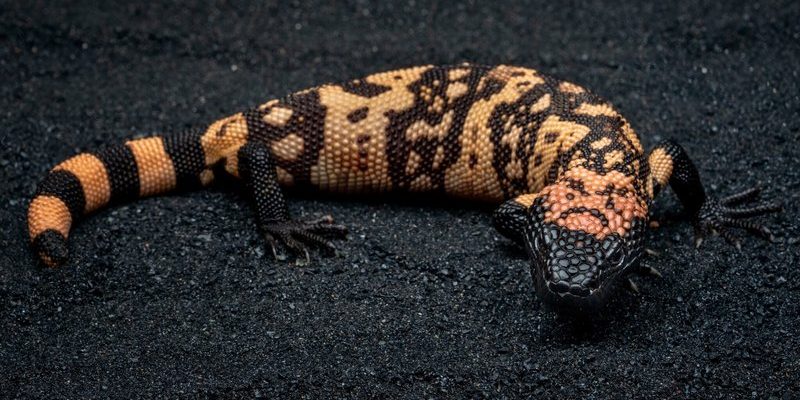
Imagine living in a place where water is scarce and food is hard to come by. Sounds tough, right? Well, the Gila monster calls the Sonoran Desert home, where these challenges are part of daily life. Let’s explore the fascinating adaptations that make this unique reptile a true survivor in its arid world.
Thick Skin for Protection
One of the first things you might notice about the Gila monster is its tough, bumpy skin. This isn’t just for show; it serves a crucial purpose. The Gila monster’s skin is covered in a layer of keratin, the same protein found in human nails. This tough exterior helps protect it from predators and the harsh environment.
Here’s the thing: the desert can be brutal with its intense heat and dryness. The Gila monster’s skin helps retain moisture, reducing the risk of dehydration. It’s almost like wearing a protective jacket that keeps the good stuff in. So, while it may look tough and scaly, its skin is a lifesaver in a challenging environment.
Additionally, its skin has vibrant patterns of orange and black, which can serve as a warning to potential predators. Many animals know that bright colors often signal toxicity. The Gila monster doesn’t just rely on its looks; it’s genuinely venomous, which adds another layer of safety. So, if a hungry predator thinks twice upon seeing those colors, the Gila monster can go about its day without worrying too much.
Venomous Bite: A Double-Edged Sword
Now, let’s talk about the Gila monster’s venom. Yes, you read that right! This lizard is one of the few venomous lizards in the world. But what does that mean for survival? The venom, produced in its salivary glands, is delivered through grooves in its teeth when it bites. This may sound scary, but let’s break it down.
The venom serves a dual purpose for the Gila monster. On one hand, it helps subdue prey, such as small mammals and birds. Imagine going after your dinner and being able to numb its escape with a quick bite. Quite handy, right? But here’s the twist: it also acts as a defense mechanism. If a predator tries to mess with a Gila monster, it can deliver a painful bite, making it less appealing as a food choice.
You might be wondering how it manages its venom. Unlike some snakes that inject venom quickly, the Gila monster’s method is more of a slow drip. This means that its prey often doesn’t realize they’ve been bitten until it’s too late. This adaptation makes it a successful hunter despite its slow speed.
Efficient Energy Management
Living in the desert comes with challenges, especially when it comes to finding food. The Gila monster has adapted to this by being an efficient energy manager. Instead of constantly searching for food, it can store energy for long periods.
Its slow metabolism allows it to thrive on a diet low in calories. The Gila monster can eat a large meal, like a bird or a small mammal, and then go for weeks or even months without eating again. Think of it like fueling up your car; once you have a full tank, you can go a long way without stopping for gas.
This energy management strategy is crucial in a desert environment, where food availability can be unpredictable. Instead of being a high-energy creature, darting around all day, the Gila monster basks in the sun, conserving energy. It’s a smart way to survive in a habitat where resources are scarce.
Behavioral Adaptations: Active at Night
The Gila monster has fascinating behavioral adaptations that help it stay alive. While many animals are active during the day to soak up the sunlight, the Gila monster takes a more cautious approach. It’s primarily nocturnal, meaning it comes alive at night when temperatures drop.
Being active at night helps the Gila monster avoid the extreme heat of the desert sun, reducing the risk of dehydration and overheating. At night, it can hunt for food and move around without the sweltering heat slowing it down. Imagine exploring a cozy outdoor area during a cool evening; that’s its playground.
This behavior also plays a role in hunting. Many of the Gila monster’s prey are diurnal (active during the day), which can make it easier for them to catch dinner when the sun goes down. It’s a clever way to use the environment to its advantage.
Burrowing Habits for Shelter
Finding shelter is another key part of survival, and the Gila monster excels at this. When it’s not hunting or basking, you might find it burrowed underground. This behavior is not just about finding a cozy spot—it’s about protection.
When the temperatures soar during the day, burrowing into the cool earth helps the Gila monster stay safe from the heat. It can retreat underground and avoid the drying effects of the sun. In addition, burrows provide refuge from potential predators. It’s like having a secret hideaway that keeps it out of harm’s way.
These burrows are often made in conjunction with other animals, like rodents. By using the abandoned homes of others, the Gila monster saves energy and resources, which is vital in its resource-scarce environment.
Diet: Omnivorous Eating Habits
The Gila monster has a versatile diet that contributes to its survival. It’s an omnivore, meaning it eats both plants and animals. This flexibility allows it to adapt to different food sources depending on what’s available.
Its primary diet consists of small mammals, birds, eggs, and various fruits and plant matter. This flexibility is crucial for survival, especially in an environment where food can be unpredictable. If one source of food runs low, the Gila monster can easily switch to another.
Interestingly, the Gila monster has a particular fondness for cacti, which are common in its desert habitat. They can consume the pads and fruits of cacti, giving them not just food but also hydration in an arid climate. It’s a remarkable example of how they use their environment to their advantage.
The Gila monster is more than just a colorful lizard; it’s a prime example of nature’s resilience and ingenuity. Through its thick skin, venomous bite, and clever behavioral adaptations, it has carved out a niche in one of the toughest environments on the planet.
Understanding how these adaptations work together gives us a deeper appreciation for this unique creature. When you think about survival in the wild, remember the Gila monster—a perfect blend of toughness and adaptability, thriving in conditions where many other species would struggle. So, the next time you hear about this fascinating lizard, you can confidently share how it survives against the odds, using not just brawn, but a whole lot of brains too!

